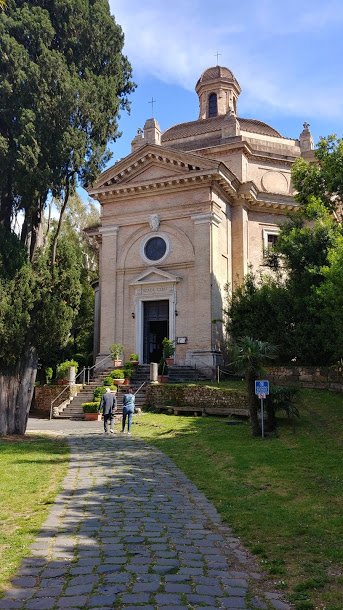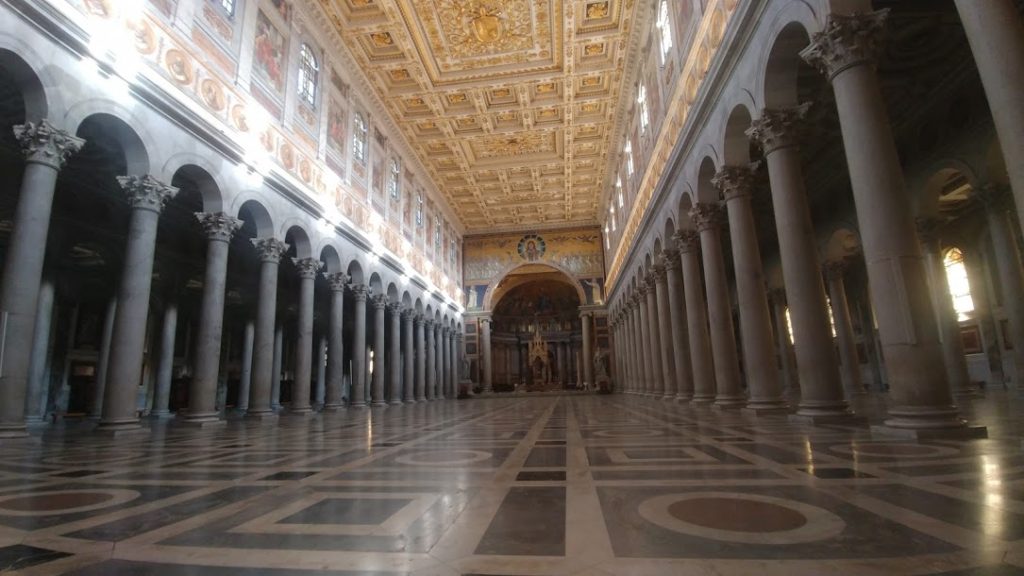Wikipedia says that there are over 900 churches in Rome, of which 66 are Catholic basilicas granted special status by the Pope. Now, I am not an historian, a Catholic, or even religious, but I do appreciate the art and architecture of interesting old buildings. And obviously, Rome has no shortage of interesting old buildings, including churches. This is a short list of some that I’ve visited in the year that I’ve lived here. It is comprehensive of nothing except my happen-stance exposure to them, and is a general overview of the impressions they made upon me. I have gone in many other churches in Rome, because they are everywhere and why not? But these are the ones that I would recommend to others.
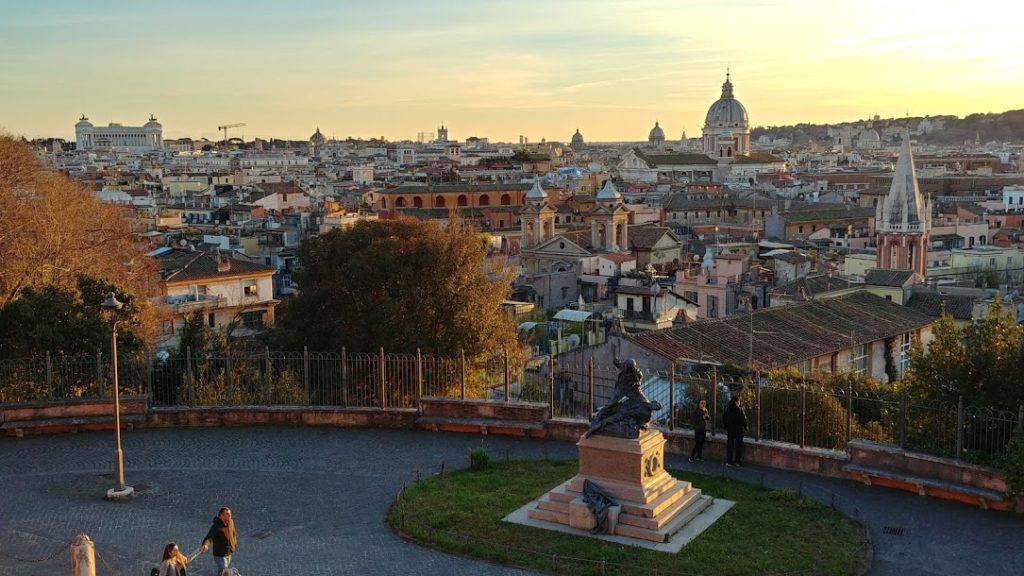
Firstly, a little history of the Catholic Church in Rome for the layperson (also lifted from Wikipedia). Following Christ’s crucifixion it didn’t take long for Christianity to reach Rome (the center of western civilization at the time), with apostles Peter and Paul eventually being martyred (e.g., murdered for their beliefs) in Rome circa 64 AD. Indeed, St. Peter is recognized as the first Roman Catholic Pope. It took several hundred years, however, for Christianity to emerge from cult status, when Constantine the Great eliminated the persecution of Christians in Rome in 313 AD. This led to a church-building boom in the 4th century, which is reflected in the age of many of the churches on this list.
Secondly, a few logistics. All churches in Rome should be free to enter for everyone. There may be an admission fee, however, to any “museum” associated with a church. There is security screening to get into the major basilicas, except for St. Paul Outside-the-Walls when I was there. Check the open hours before going because some churches may be closed in the afternoon.
Page 2: The Four Major Basilicas
St. Peter’s Basilica: Of course, everyone coming to Rome must already know something about St. Peter’s. It is the primary church at the Vatican and the biggest Roman Catholic Church in the world. Out front is the square where pilgrims come from all over the world to see the Pope. I was first here as a tourist about 15 years ago with my young family and spent part of a day touring the grand church and nearby Vatican museums. In the last year I’ve been here twice, trying to go during the off times when the crowds might be smaller. It is still amazing, both inside and out. The security line to get inside varies in length, but moves reasonably quickly.
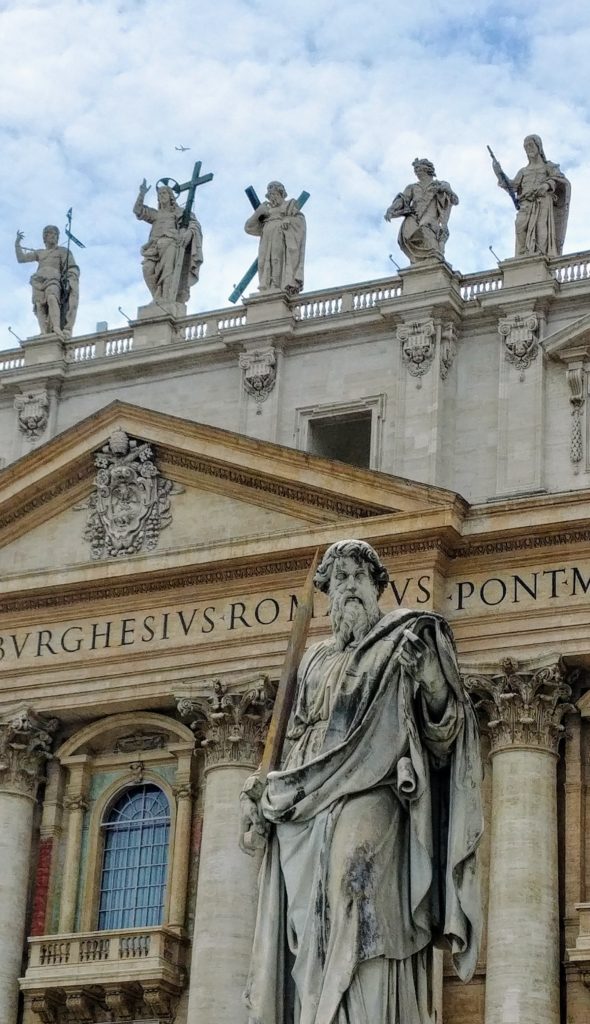
The construction of the original St. Peter’s was started in the 4th century on the place where St. Peter was buried, but the present basilica wasn’t completed until 1626. An unwritten rule limiting building height in Rome still makes the dome of St. Peter’s the tallest structure on the landscape. The church is not only gigantic, it is awe inspiring in it’s beauty. It was partially designed by Michelangelo and has opulent artwork and craftsmanship at every turn. On a slightly different note, downstairs are many of the tombs of Popes past.
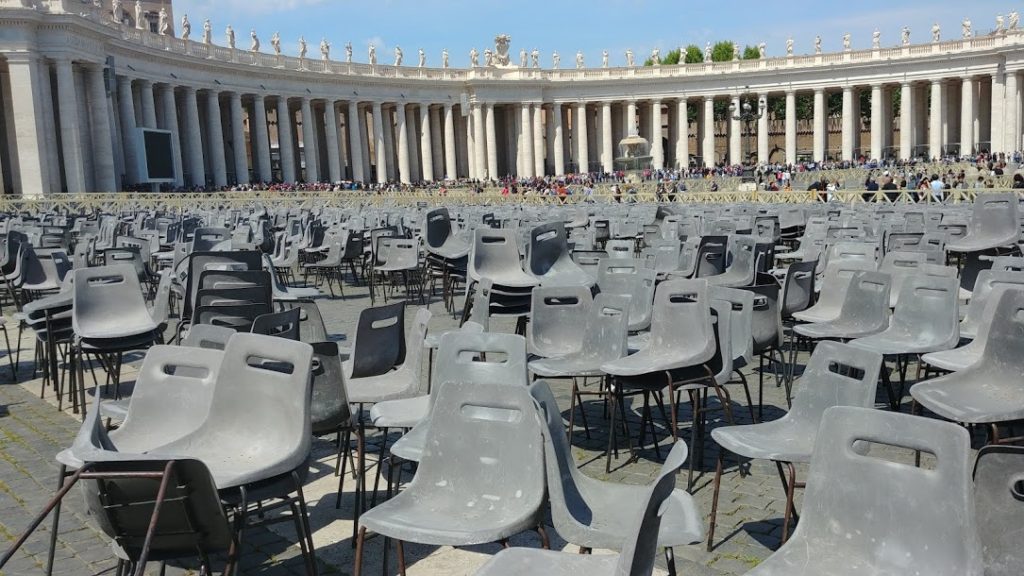
Basilica di San Giovanni in Laterano: Our first AirBnB apartment was just outside the San Giovanni neighborhood and one day when I was walking to the subway I noticed some impressive white statues towering above the neighboring buildings. I initially reflected on Rome having some really cool things, but I was on my way somewhere else and didn’t have time to explore further. It wasn’t until a month later when I enrolled in an Italian class across the street from this church that I really took notice. Out front, there was an honor guard of uniformed service members from the military, police, fire department, and medical services. After class I went to see what the fuss was about, hoping that it wasn’t a funeral, and crashed the end of a mass celebrating these service members. The Pope is officially the head of this church but, unfortunately, he was not leading the mass. Once I discovered this church, I came here regularly during my three months of classes to sit quietly and contemplate the place.
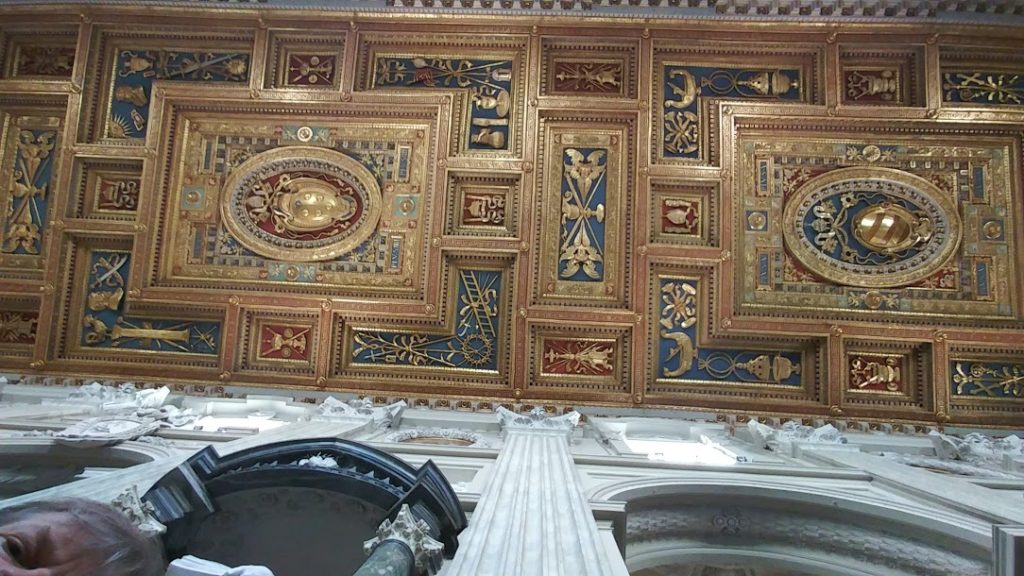
This church is dedicated to two St. Johns, the Baptist and the Evangelist, and is the oldest public church in Rome (consecrated 324 AD). Matching the large statues on the outside are rows of very impressive statues of apostles on the inside. There are always people here, being only a couple of tram stops from the Colosseum, but it’s never as crowded as St. Peter’s. In the church across the street are the Scala Sancta (Holy Stairs) where the faithful ascend on their knees.
Basilica of Santa Maria Maggiore: This church is only a few blocks southwest of the Termini Train Station, the unofficial center of our lives during for our first few months in Rome. On a hot summer day six months after we’d arrived, I looked up from a sidewalk café across the street and said “Hey, look at that big church! We should go in there!” I hadn’t really noticed it before, with all the other historic things I was discovering.
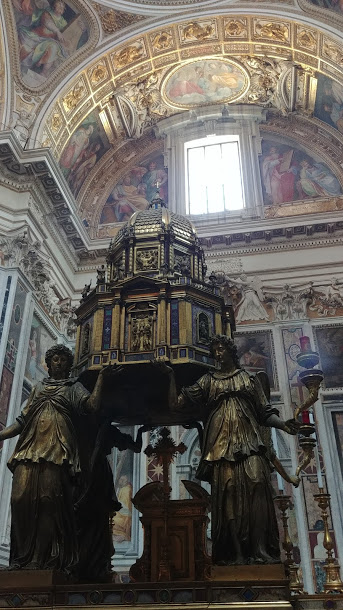
Santa Maria Maggiore Basilica is dedicated to the Virgin Mary and construction wasn’t started until the 5th century. This version of the church was completed in 1743. It too, is opulent, beautiful, and worth seeing, with an amazing apse arch mosaic and religious paintings. The crypt has tombs of past Popes as well as “wood from the Holy Crib.”
Basilica of St. Paul Outside-the-Walls: This church was the last of my “Four Major Basilicas,” which I didn’t even know was a thing until I did some research on St. Paul’s before going. I was first drawn to it when I noticed the San Paulo Basilica subway stop and thought “that must be something important and cool.” On the day that I visited in early December it was almost empty, and a huge quiet church is an interesting place to be on a cold windy day.
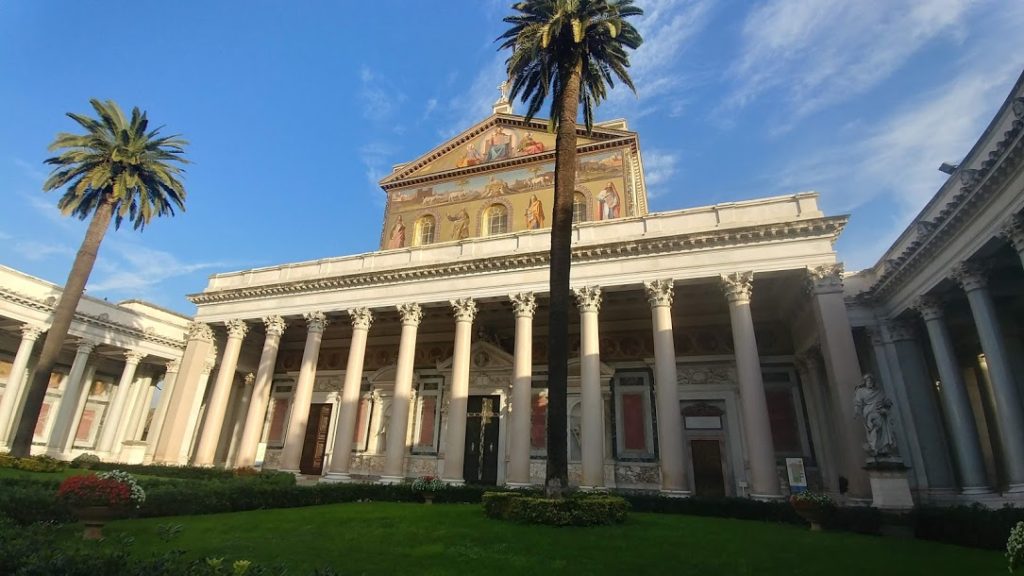
Like the other major basilicas, this church is huge. It was built over St. Paul’s burial site starting in the early 4th Century. It is indeed outside the Aurelian walls, which must have made it difficult to protect over the years. Other unique things about it for me are entrance courtyard, the portraits of all of the Popes along the upper walls, and the brilliant mosaic above the apse (it’s worth it to pay the euro to turn the lights on). There’s also a cloister museum off to the side that has religious relics (e.g., body parts of saints). And there’s a gift shop and a restaurant on the way out. I bought a couple of things made from the recipes of Benedictine monks – nice bars of smelly soap and a bottle of amaro liqueur.
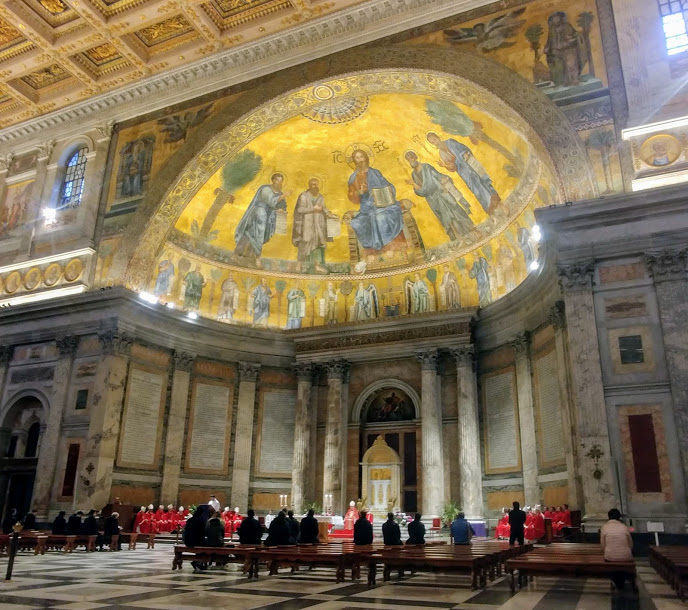
Page 3: The Pantheon
The Pantheon is a stop on the standard stroll that I take first-time tourists on through the Centro Storico part of Rome – Piazza del Popolo, Villa Borghese, the Spanish Steps, Trevi Fountain, the Pantheon, Piazza Navona. I’ve probably been there 10 times. It’s amazing everytime. One time I went on a hot summer day just to sit outside and watch the street peddlers accost the tourists. The best visit was when we inadvertently arrived 10 minutes before closing and literally were the last ones out, having the place to ourselves for a few precious moments. Rick Steves says getting there early in the morning can also be a good idea.
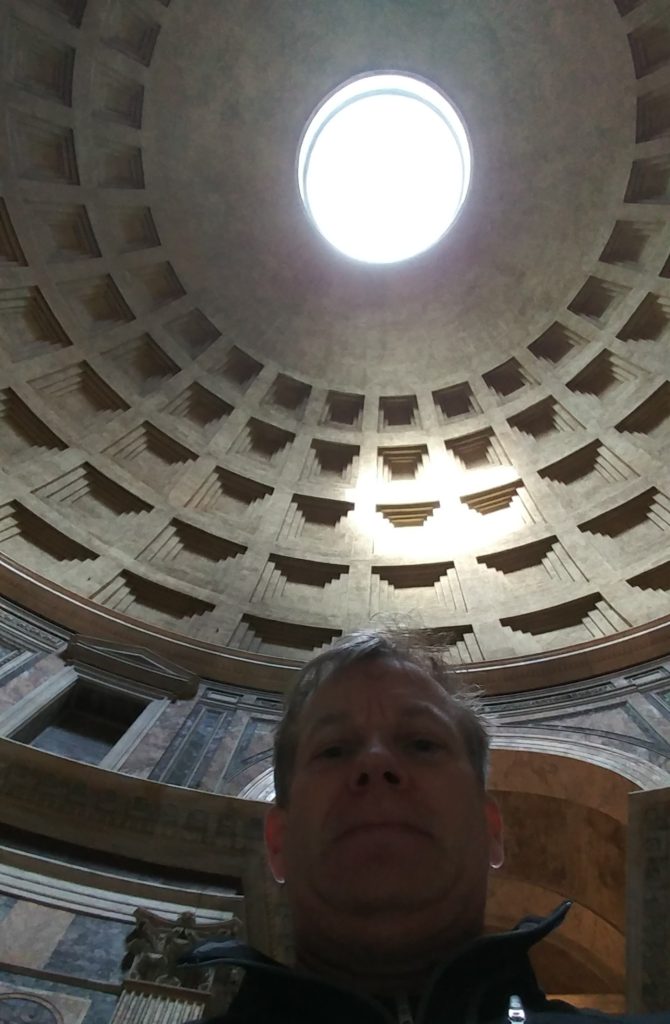
This church predates all the others on this list because it was originally built as a Roman pantheic temple in the 2nd century before Christianity was “legalized” in Rome. It wasn’t consecrated as a Catholic church until 609 AD. The entrance through the giant pillars and doors is stupendous, as is the dome with the oculus at the top. It is still the largest unreinforced concrete dome in the world. Raphael, King Victor Emmanuel II, and King Umberto I are buried here.
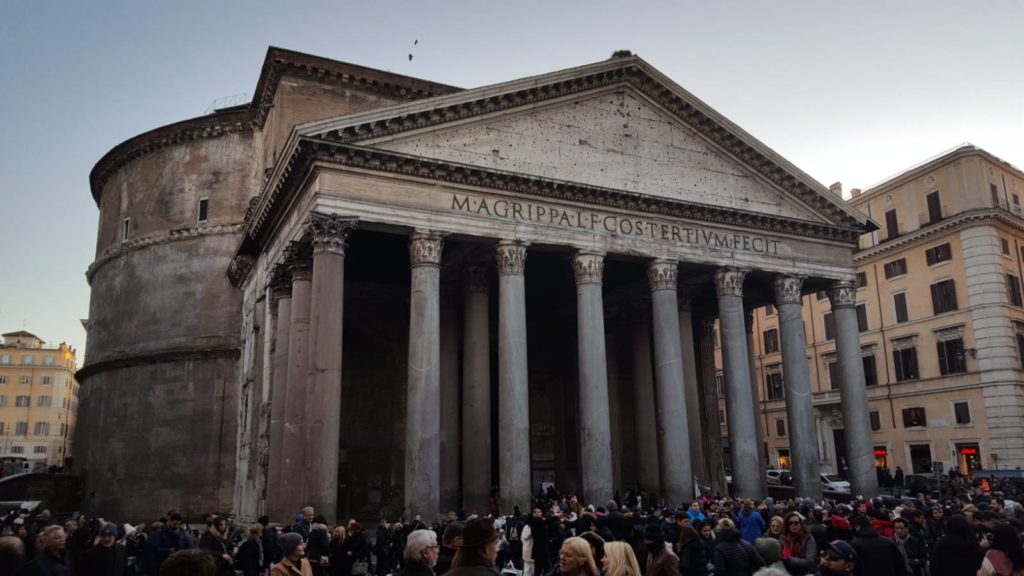
Page 4: The Caravaggio Church Tour
My Italian language school took a field trip to three churches in the Centro Storico to explore the art of Caravaggio (1571-1610). I’d heard of him as a renaissance painter, of course, but didn’t really appreciate his work until the lights went on (literally – put a euro in the box!) in one of the side chapels of one of these churches. I was expecting the typical religious artwork of the period, but what I discovered on the wall was Caravaggio’s trademark use of shadows, capturing the interior darkness of what it must have been like prior to electricity. The paintings are amazing. Caravaggio’s life is equally intriguing, being chased around southern Italy and Malta for the crimes he apparently committed in his real life, before dying at a relatively young age. And I understood much of this field trip lesson in immersive Italian!
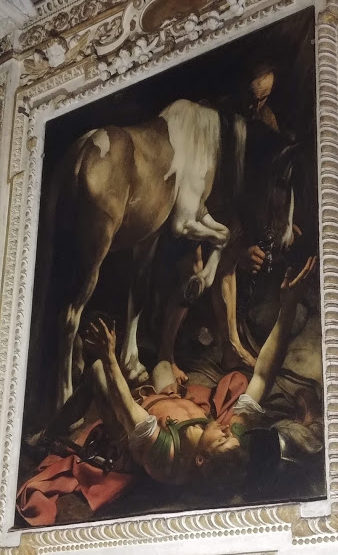
The churchs with Caravaggio paintings are the Church of St. Louis of the French and Sant’Agostino near Piazza Navona, and Santa Maria del Popolo at the edge of Piazza del Popolo.
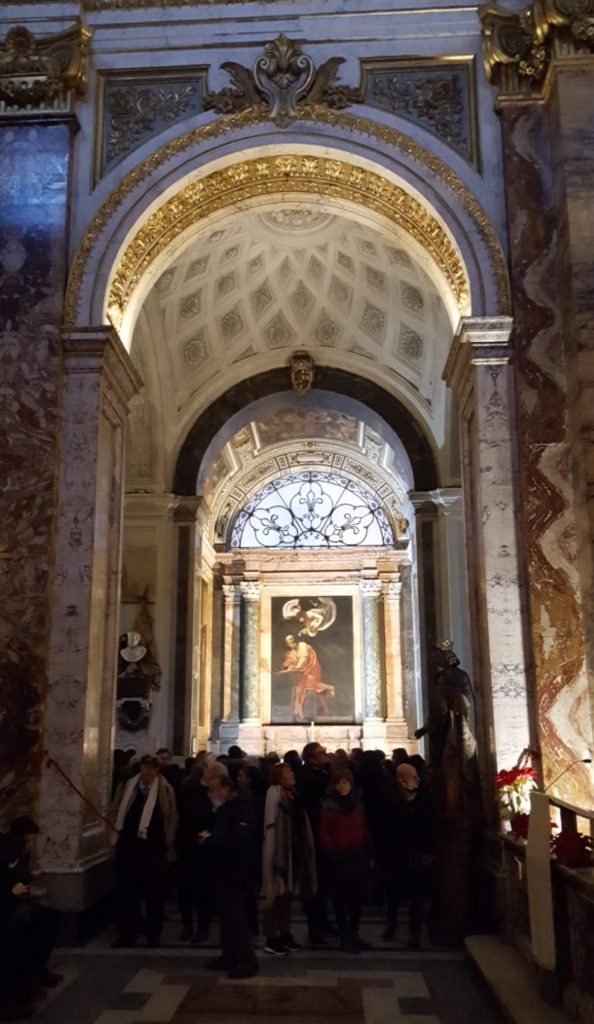
Page 5: A Short Trastevere Church Tour
On another field trip, this time with the United Nations Women’s Guild (they really need to change that name), I toured two churches in the Trastevere neighborhood. San Crisogono is one of the first parish churches in Rome, having first been constructed in the early 4th century. Prior to that time, the domus occupying the site was likely a place of worship for early Christians pushed “underground” from religious persecution. In the 12th century the church was rebuilt again, raising it seven meters higher to avoid the regular flooding of the Tiber River. All three parts of the church’s history can be seen on a tour of the basement!
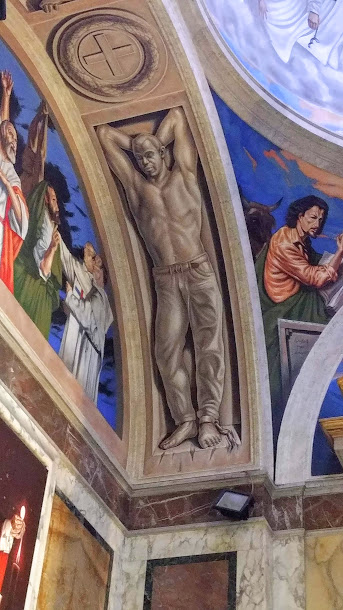
The second church on the Trastevere church tour was Santa Cecilia, named after an early Christian martyred for her beliefs circa 200 AD. The church is built on the site of her home. Saint Cecilia was apparently quite musical and became the patron saint of musicians, which brings a completely different meaning to the Simon and Garfunkel song. Apparently it’s really about writer’s block. After the tour, as I was sitting in the church waiting for the rain to stop outside, a nun started to practice on the church organ. I thought that was pretty special, even if it was a little more somber than Simon and Garfunkel. Upstairs is a mural painting of the Last Judgement (circa 1290) by Cavallini. It is worth the two euro entrance fee.
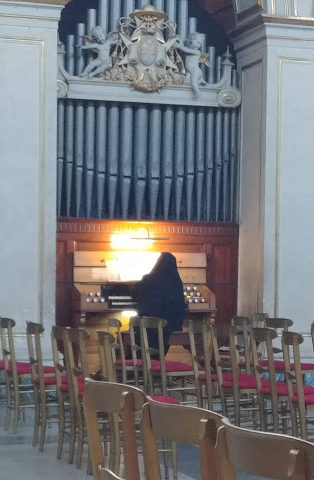
Page 6: The End of My List
The last on my list of churches to visit in Rome is Trinità dei Monti. This is the French church at the top of the Spanish Steps! Constructed in the 16th century, it is a relatively new church and hosts artwork from a newer era. There is a convent associated with the church that can be visited at specific and restricted times. Climb the stairs, see the church, walk to Villa Borghese.
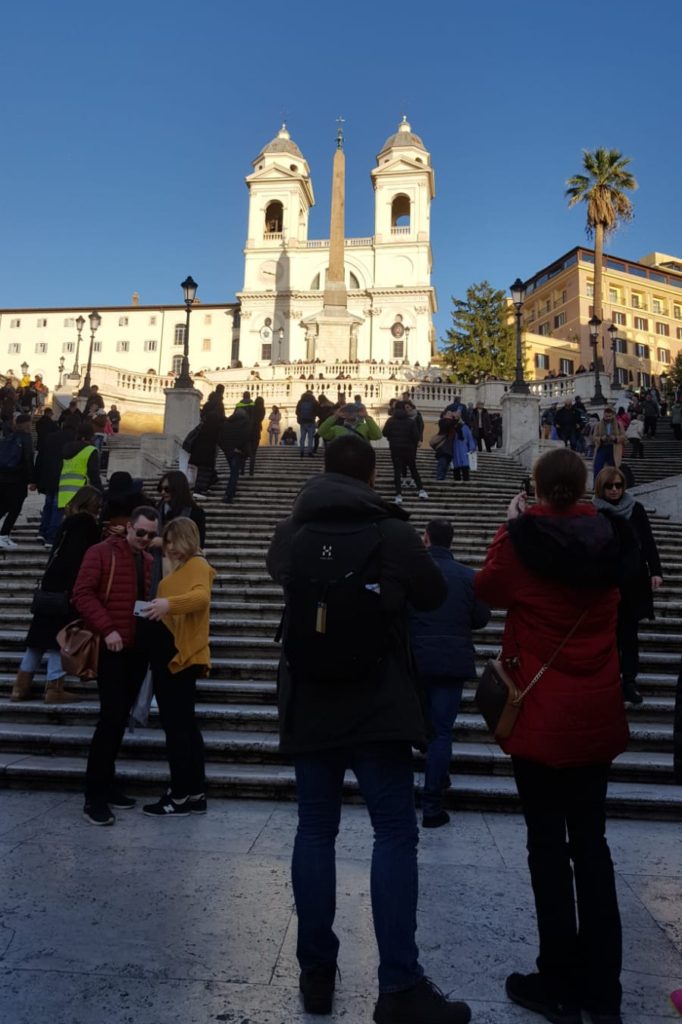
When I was walking around Centro Storico with one of our early visitors she asked me about one of the churches we were passing. I said something about how I’d been in there before and how it wasn’t anything special. She came out a few minutes later with her mouth agape, “NOTHING SPECIAL?!” I guess they don’t have many 1,500-year-old churches in Canada. A perfect reminder that I should not to take them for granted.
Enjoy!
